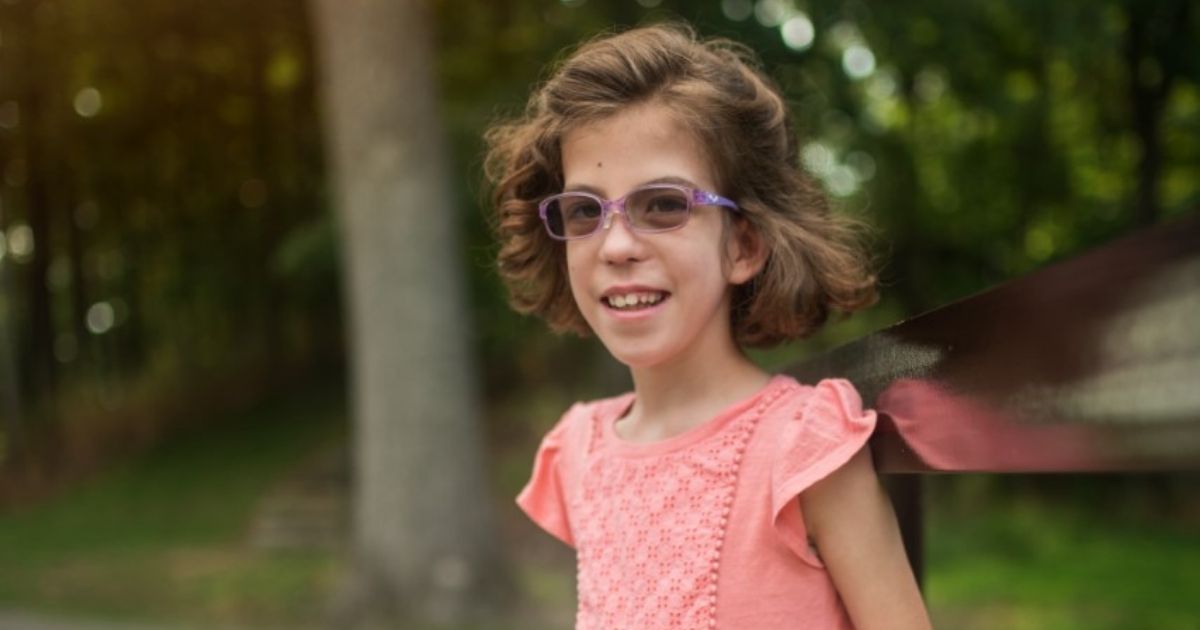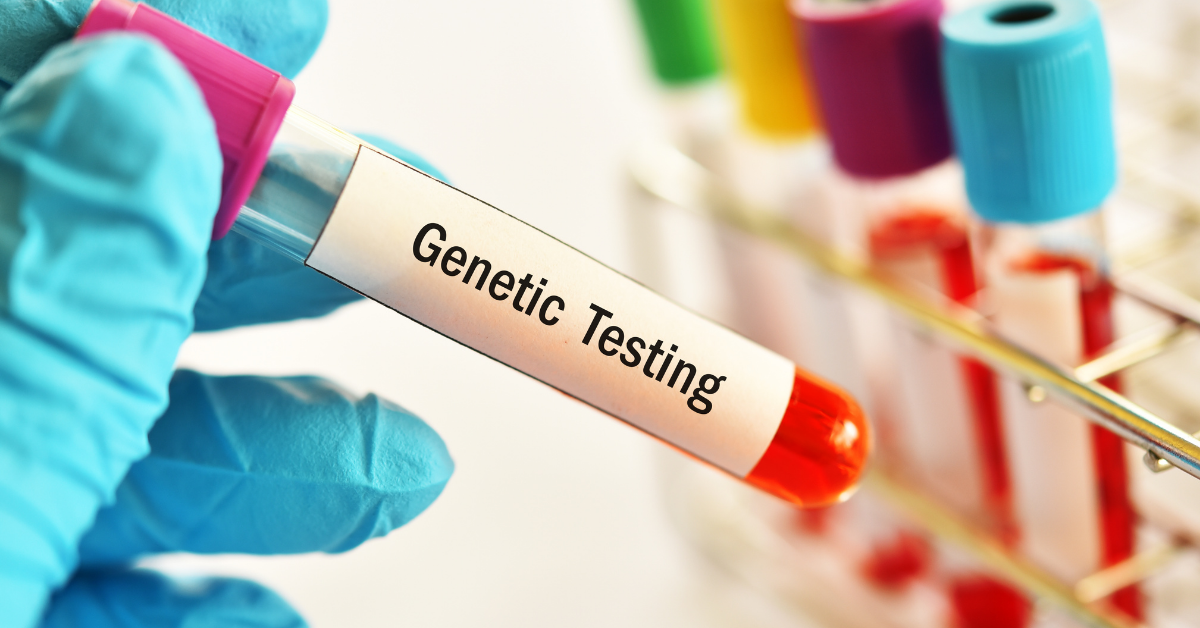
Author: Kenneth A. Myers, MD, PhD, FRCPC
Research Institute of the McGill University Medical Centre; Montreal Children’s Hospital, McGill University Health Centre, Montreal, Quebec, Canada
Reviewed: November 2021
SUMMARY
Koolen-de Vries syndrome (KdVS) is a genetic condition. People with KdVS have a particular set of facial features. People with KdVS also have intellectual disability. People with KdVS may have other medical issues, too. These can include:
- Delayed speech
- Low muscle tone (floppiness)
- Seizures
- Undescended testicles
- Abnormalities in the heart, kidney, or bladder
Koolen-de Vries syndrome is caused by mutations in a gene called KANSL1.
JUMP TO
Disorder Overview
SIGNS AND SYMPTOMS
Two symptoms appear in all children with KdVS:
- Intellectual disability. Intellectual disability is usually mild to moderate.
- A particular set of facial features. The same set of facial features are seen in all individuals. They may involve:
- Upslanting eyes
- Drooping eyelids
- A pear-shaped nose
- Large, protruding ears

There are many other possible signs and symptoms.
They include:
Speech delays
Low muscle tone (floppiness)
Low muscle tone is often seen in those with KdVS. It is especially seen right after birth and during the first 1 or 2 years of life. Children with low tone may develop scoliosis. Scoliosis is an abnormal curvature of the spine.
Epilepsy
In epilepsy, a child has recurrent seizures. Epilepsy affects about 1 in 3 children with KdVS. The seizures are sometimes long. They may initially be hard to control with antiseizure medications. Children with KdVS can experience different types of seizures. Often, however, the seizures make the child pale and unresponsive. They may also involve sweating, drooling, or vomiting.
Brain abnormalities
Children with KdVS often have differences in how their brains are structured.
Many malformations may occur, but the two most common brain differences in KdVS are:
- Problems with the corpus callosum. A structure called the corpus callosum connects the left and right sides of the brain. It can be malformed in those with KdVS.
- Enlarged ventricles. Fluid-filled pockets in the brain are called ventricles. They can be enlarged in those with KdVS.
Developmental regressions
This refers to the loss of some developmental milestones already reached. Regressions tend to appear during childhood. They sometimes take place at the same time as seizures. They may occur alongside a specific pattern of brain activity called electrical status epilepticus in sleep (ESES) or continuous spike-wave in sleep (CSWS). The activity is detectable with a test called an electroencephalogram (EEG). Developmental improvement following the regressions is usually slow, and often dependent on how well seizures or epileptiform activity on EEG (ESES/CSWS) can be controlled with medication.
Kidney or bladder malformations
Problems with vision or hearing
CAUSES
KdVS is a genetic condition. It is caused by mutations involving a gene called KANSL1. Healthy people carry two normal copies of the gene. People with KdVS have a problem with one of their KANSL1 genes.
This can be:
- A gene deletion. 95% of people with KdVS have only one copy of the gene.
- A coding error. 5% of people with KdVS have a small error in the code of one copy.
In almost all cases, the mutation that causes KdVS is a new change to the DNA. This is called a de novo genetic change. It was not inherited from either parent. De novo genetic changes occur spontaneously. They are not related to any events during pregnancy. They are not related to other parental factors, including age.
LAB INVESTIGATIONS
Diagnosis
To diagnose Koolen-de Vries syndrome:
- A doctor will observe clinical features of KdVS
- The diagnosis will be confirmed through genetic testing
The genetic testing needed will depend upon what type of genetic change is present.
Chromosomal microarray
Gene sequencing
5% of patients have a coding error in KANSL1. They will need gene sequencing. This can identify the specific error in the code. In most cases, doctors will order a gene panel for this. The panel will include many genes associated with intellectual disability. KANSL1 will be part of the panel.
Further Tests
Children with KdVS will usually receive a variety of other tests, too. These tests can look for certain problems associated with KdVS.
Possible tests include:
Echocardiogram
Magnetic resonance imaging (MRI)

TREATMENT AND THERAPIES
There is not presently any way to treat the genetic cause of KdVS.
However, there are many ways to treat its symptoms.
Antiseizure Medication
Surgery
Physical therapy
Hearing treatments
RELATED DISORDERS
There are many other genetic conditions involving intellectual disability. Some of them also share other features with KdVS. However, these are usually easy to tell apart from KdVS. Examples of similar disorders include:
- 22q11 deletion syndrome
- Cardiofaciocutaneous syndrome
- Fragile X syndrome
- Prader-Willi syndrome
OUTLOOK
Education
Children with KdVS will usually need extra help in school. They may do better in specialized classes.
Language delays may be severe in early childhood. However, speech usually improves significantly between the ages of 8 and 12. Support from a speech therapist is very important. The speech therapist can help with language challenges.
Daily Life
Daily life for children with KdVS can vary from child to child. It depends on what specific issues a child has. Some children will have frequent appointments with different medical specialists and therapists. They may need to take medication daily. Others will need fewer interventions.
Someone with KdVS will not likely be able to live independently as an adult. This depends on how serious the intellectual disability is. An adult with KdVS may have a hard time:
- Finding a job
- Taking care of routine, day-to-day tasks, such as buying groceries, cooking meals, and paying bills on time
Medical Outlook
There is not yet reliable data on life expectancy in KdVS. However, people with KdVS typically live at least into adulthood. For children with epilepsy, seizures may be hard to control. However, many children grow out of their seizures later in life. They may eventually be able to come off antiseizure medication.

Resources
Koolen-de Vries Syndrome Foundation
The mission of the Koolen-de Vries Syndrome Foundation (KDVS Foundation) is to educate, increase awareness, and promote research for the support and enrichment of individuals living with Koolen-de Vries syndrome and their families.

Child Neurology Foundation (CNF) solicits resources from the community to be included on this webpage through an application process. CNF reserves the right to remove entities at any time if information is deemed inappropriate or inconsistent with the mission, vision, and values of CNF.
Research
ClinicalTrials.gov for Koolen-de Vries Syndrome are clinical trials that are recruiting or will be recruiting. Updates are made daily, so you are encouraged to check back frequently.
ClinicalTrials.gov is a database of privately and publicly funded clinical studies conducted around the world. This is a resource provided by the U.S. National Library of Medicine (NLM), which is an institute within the National Institutes of Health (NIH). Listing a study does not mean it has been evaluated by the U.S. Federal Government. Please read the NLM disclaimer for details.
Before participating in a study, you are encouraged to talk to your health care provider and learn about the risks and potential benefits.
The information in the CNF Child Neurology Disorder Directory is not intended to provide diagnosis, treatment, or medical advice and should not be considered a substitute for advice from a healthcare professional. Content provided is for informational purposes only. CNF is not responsible for actions taken based on the information included on this webpage. Please consult with a physician or other healthcare professional regarding any medical or health related diagnosis or treatment options.
References
Morgan AT, Haaften LV, van Hulst K, Edley C, Mei C, Tan TY, Amor D, Fisher SE, Koolen DA. Early speech development in Koolen de Vries syndrome limited by oral praxis and hypotonia. Eur J Hum Genet. 2018 Jan;26(1):75-84. Epub 2017 Dec 11. PMID: 29225339; PMCID: PMC5839037; https://doi.org/10.1038/s41431-017-0035-9
Koolen DA, Sharp AJ, Hurst JA, Firth HV, Knight SJ, Goldenberg A, et al. Clinical and molecular delineation of the 17q21.31 microdeletion syndrome. J Med Genet. 2008 Nov;45(11):710-20. Epub 2008 Jul 15. Erratum in: J Med Genet. 2009 Aug;46(8):576. PMID: 18628315; PMCID: PMC3071570; https://doi.org/10.1136/jmg.2008.058701
Myers KA, Mandelstam SA, Ramantani G, Rushing EJ, de Vries BB, Koolen DA, Scheffer IE. The epileptology of Koolen-de Vries syndrome: Electro-clinico-radiologic findings in 31 patients. Epilepsia. 2017 Jun;58(6):1085-1094. Epub 2017 Apr 25. PMID: 28440867; https://doi.org/10.1111/epi.13746
Koolen DA, Morgan A, de Vries BBA. Koolen-de Vries Syndrome. 2010 Jan 26 [updated 2019 Jun 13]. In: Adam MP, Ardinger HH, Pagon RA, Wallace SE, Bean LJH, Mirzaa G, Amemiya A, editors. GeneReviews® [Internet]. Seattle (WA): University of Washington, Seattle; 1993–2021. PMID: 20301783.
Koolen-de Vries Syndrome Foundation. Koolen-de Vries Syndrome Foundation 2019 [cited 2021]. Available from: https://KdVSfoundation.org
